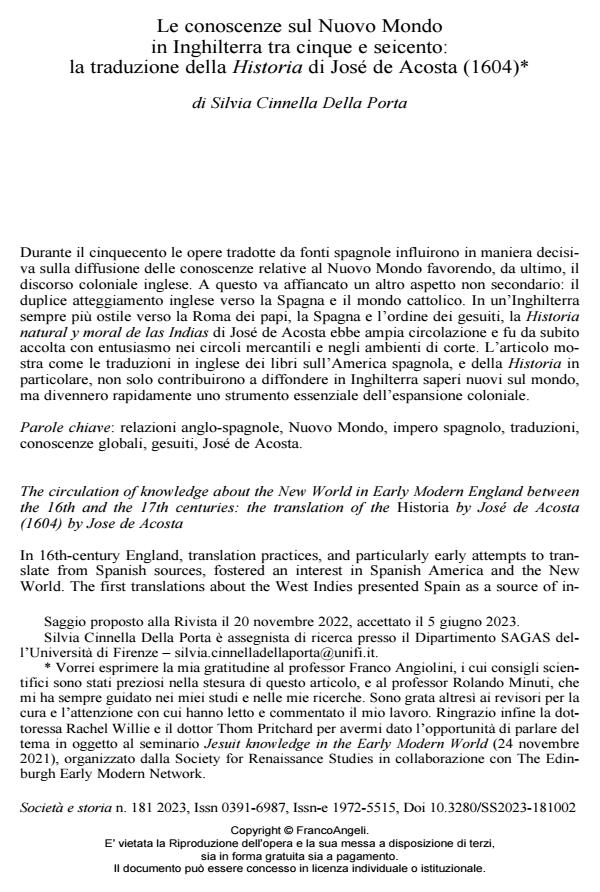The circulation of knowledge about the New World in Early Modern England between the 16th and the 17th centuries: the translation of the Historia by José de Acosta (1604) by Jose de Acosta
Journal title SOCIETÀ E STORIA
Author/s Silvia Cinnella Della Porta
Publishing Year 2023 Issue 2023/181
Language Italian Pages 31 P. 427-457 File size 271 KB
DOI 10.3280/SS2023-181002
DOI is like a bar code for intellectual property: to have more infomation
click here
Below, you can see the article first page
If you want to buy this article in PDF format, you can do it, following the instructions to buy download credits

FrancoAngeli is member of Publishers International Linking Association, Inc (PILA), a not-for-profit association which run the CrossRef service enabling links to and from online scholarly content.
IIn 16th-century England, translation practices, and particularly early attempts to tran- slate from Spanish sources, fostered an interest in Spanish America and the New World. The first translations about the West Indies presented Spain as a source of inspiration, so that reading about Spain’s achievements in the New World soon excited youthful admiration, and Englishmen became eager to compete with the Spanish on the scene of their deeds. Of all English translations dedicated to South America, José de Acosta’s Naturall and morall historie of the East and West Indies (1604) offered the most comprehensive overview of the mineral, botanical, and animal resources of the New World. The article shows how English attitudes towards Spain and the Catho- lic world were often ambivalent, as translations from Spanish not only contributed to the first circulation of global knowledge in England but rapidly became an essential tool of colonial expansion.
Keywords: Anglo-Spanish relations, New World, Spanish colonial empire, translation practices, global knowledge, Jesuits, José de Acosta.
Silvia Cinnella Della Porta, Le conoscenze sul Nuovo Mondo in Inghilterra tra cinque e seicento: la traduzione della Historia di José de Acosta (1604) in "SOCIETÀ E STORIA " 181/2023, pp 427-457, DOI: 10.3280/SS2023-181002